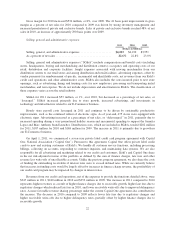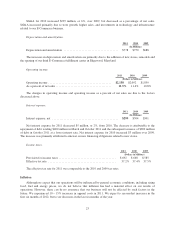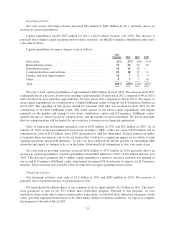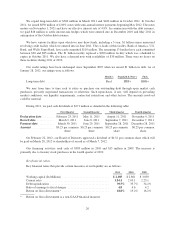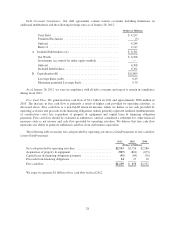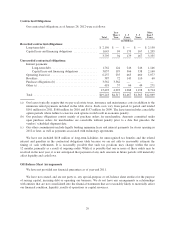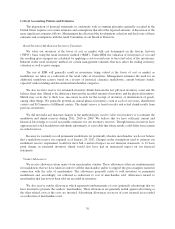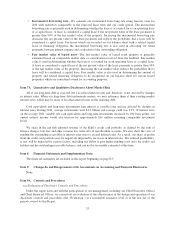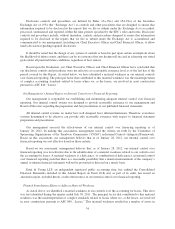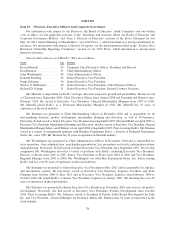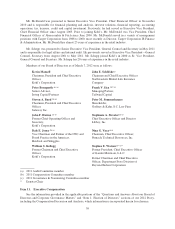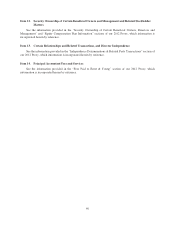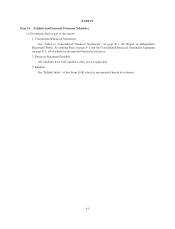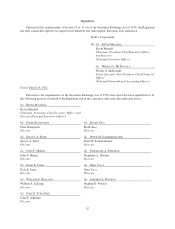Kohl's 2011 Annual Report Download - page 32
Download and view the complete annual report
Please find page 32 of the 2011 Kohl's annual report below. You can navigate through the pages in the report by either clicking on the pages listed below, or by using the keyword search tool below to find specific information within the annual report.expenses, such as store payroll and occupancy expense. Projected cash flows must be estimated for future periods
throughout the remaining life of the property, which may be as many as 40 years in the future. The accuracy of
these estimates will be impacted by a number of factors including general economic conditions, changes in
competitive landscape and our ability to effectively manage the operations of the store.
We have not historically experienced any significant impairment of long-lived assets. Additionally,
impairment of an individual building and related improvements, net of accumulated depreciation, would not
generally be material to our financial results.
Income Taxes
We regularly evaluate the likelihood of realizing the benefit for income tax positions we have taken in
various federal and state filings by considering all relevant facts, circumstances and information available to us.
If we believe it is more likely than not that our position will be sustained, we recognize a benefit at the largest
amount which we believe is cumulatively greater than 50% likely to be realized. Our unrecognized tax benefit,
excluding accrued interest and penalties, was $101 million as of January 28, 2012 and $96 million as of
January 29, 2011.
Unrecognized tax benefits require significant management judgment regarding applicable statutes and their
related interpretation, the status of various income tax audits and our particular facts and circumstances. Also, as
audits are completed or statutes of limitations lapse, it may be necessary to record adjustments to our taxes
payable, deferred tax assets, tax reserves or income tax expense. Although we believe we have adequately
reserved for our uncertain tax positions, no assurance can be given that the final tax outcome of these matters will
not be different.
Operating Leases
As of January 28, 2012, 724 of our 1,127 retail stores were subject to either a ground or building lease.
Accounting for leased properties requires compliance with technical accounting rules and significant judgment
by management. Application of these accounting rules and assumptions made by management will determine
whether we are considered the owner for accounting purposes or whether the lease is accounted for as a capital or
operating lease in accordance with ASC 840, “Leases.”
If we are considered the owner for accounting purposes or the lease is considered a capital lease, we record
the property and a related financing or capital lease obligation on our balance sheet. The asset is then depreciated
over its expected lease term. Rent payments for these properties are recognized as interest expense and a
reduction of the financing or capital lease obligation.
If the lease is considered an operating lease, it is not recorded on our balance sheet and rent expense is
recognized on a straight-line basis over the expected lease term.
The most significant estimates used by management in accounting for property leases and the impact of
these estimates are as follows:
•Expected lease term—Our expected lease term includes both contractual lease periods and cancelable
option periods where failure to exercise such options would result in an economic penalty. The
expected lease term is used in determining whether the lease is accounted for as an operating lease or a
capital lease. A lease is considered a capital lease if the lease term exceeds 75% of the leased asset’s
useful life. The expected lease term is also used in determining the depreciable life of the asset or the
straight-line rent recognition period. Increasing the expected lease term will increase the probability
that a lease will be considered a capital lease and will generally result in higher rent expense for an
operating lease and higher interest and depreciation expenses for a leased property recorded on our
balance sheet.
32


